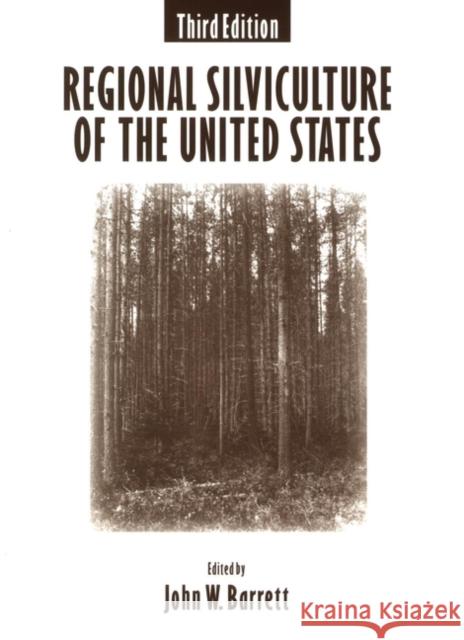Regional Silviculture of the United States » książka
Regional Silviculture of the United States
ISBN-13: 9780471598176 / Angielski / Twarda / 1995 / 656 str.
A valuable working resource for professionals.
An excellent text for advanced forestry students . . .
This unique book provides students and professionals with a broad- based knowledge of contemporary silviculture theory and practice. Throughout, the authors emphasize fundamental questions of edaphic, physiographic, and climatic site factors, as well as ecological relationships and silvical characteristics of major tree species. Updated and expanded to reflect the many scientific, socioeconomic, and public policy trends that have had a profound impact on silviculture over the past decade, this Third Edition of Regional Silviculture of the United States:
* Brings together the knowledge and expertise of fourteen leading experts from around the nation
* Provides a rational framework with which to critically assess forest data and to develop innovative silvicultural solutions
* Features region-by-region coverage of the eleven major forest types in the continental U.S. and Alaska
* Offers a detailed look at practices that promote a wide range of forest resources--from wood production and outdoor recreation, to wildlife habitat and range forage production
* Now includes more in-depth coverage of such crucial themes as biodiversity, endangered species, habitat fragmentation, forest health, landscape management, neotropical migrants, and more
..".silviculture is not reducible to a series of rules; it must be flexible and adaptable to a variety of conditions. Much of it is an art as well as a synthesis of ecology and economics. There is no single best answer to how a stand should be managed. And institutional and societal constraints must be considered." --from the Preface by John W. Barrett
Regional Silviculture of the United States, Third Edition is not a "cookbook,"offering pat recipes for solving "typical" silvicultural problems. Instead, it arms those responsible for the development and care of forests with something far more valuable--a rational framework for the analysis of forest data and the development of innovative solutions tailored to specific forest types and the shifting politicoeconomic constraints under which silviculturalists must work.
One way in which this book achieves that goal is by providing readers with a broad-based knowledge of contemporary silviculture theory and practice. In chapters organized according to the eleven major forest regions of the continental U.S., fourteen recognized experts from around the nation--each of them a specialist in a particular region of operation--offer their valuable insights and observations on silviculture in general and on various silvicultural practices with which they are familiar. Throughout, the authors are attentive to fundamental considerations of edaphic, physiographic, and climatic site factors, as well as ecological relationships and silvical characteristics of major tree species.
This Third Edition of John W. Barrett's classic has been revised and expanded to encompass a number of important themes which have risen to prominence within silviculture over the past decade, including biodiversity, endangered species, habitat fragmentation, forest health, landscape management, and neotropical migrants.
Timely, authoritative, and comprehensive in scope, Regional Silviculture of the United States, Third Edition is a valuable resource for foresters, forestry students, ecologists, environmental scientists, and all those concerned with development, management, and preservation of our most valuable national treasure.











